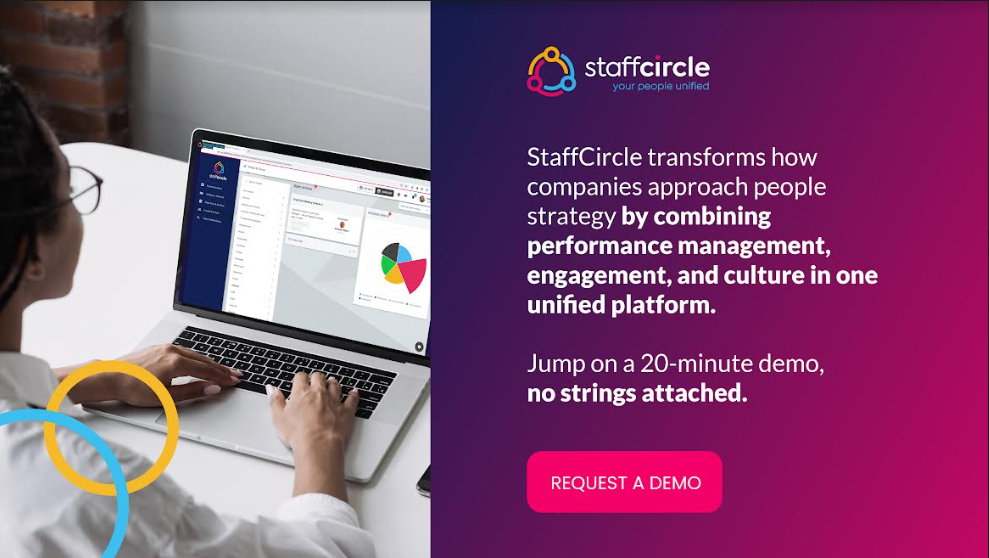Understanding the core principles and best practices for an effective employee performance management strategy
Effectively managing employee performance involves a range of tools and techniques which are integrated into a broader system. These tools encompass setting and tracking objectives, understanding the employee experience, and aligning individual growth with the overall strategy of the organization.
When used in coordination, they offer a birds’ eye view of the company, allowing business leaders to pre-empt issues and drive success. This comprehensive guide breaks down the employee performance management process into its core processes.
Why is it important to manage employee performance?
Consistent and regular performance management offers holistic insights into individual, team and company-wide performance issues. By bringing together multiple data points, managers, HR leaders and executives can make on-the-fly decisions to swiftly address poor performance while maximizing employee potential.
How do you deal with an employee with poor performance?
A comprehensive employee performance strategy is geared towards enhancing performance across the spectrum. Employees who are performing poorly can be easily identified, and the nature of their poor performance understood through a range of mechanisms.
Managers and HR leaders can use a range of data including attendance records, objectives and key results (OKRs) and others to pinpoint where things went wrong. From this, corrective measures such as performance improvement plans can be implemented which allows them to set the employee back on the right track.
What are the challenges of performance management?
Effectively managing employee performance can sometimes bring up challenges, which, if not overcome, can result in detrimental outcomes for an organization. Such challenges include:
- Unclear strategic goals. Without a clear strategy, employee performance management is unlikely to deliver optimal results. Business owners need to be clear on their expectations so that their employees are aligned to a clear strategy. This strategy is necessary to inform the key performance indicators (KPIs) through which the success of the strategy can be measured.
- Failure to implement performance management correctly. When managing employee performance, everyone needs to be on the same page. When different managers and team leaders implement a performance management strategy to varying degrees, the data becomes unreliable and employees can end up feeling as if they are being treated differently.
- Lack of company-wide integration. Performance management systems should be integrated throughout the workplace, and should be reflected in the organization’s sense of culture. When the processes which underpin great performance management aren’t replicated in a given team or department, business leaders lose clarity concerning the overall health of their company.
What are the disadvantages of performance management?
Employee performance management is highly effective when conducted correctly. But if it is poorly implemented a number of disadvantages can arise which results in negative consequences. Failure to recognise and overcome the challenges previously highlighted can result in decreased performance and unhappy employees.
Some of these disadvantages when managing employee performance isn’t handled correctly:
- Employees can become disgruntled and believe they are not being treated fairly
- Morale throughout the workforce could diminish
- Job satisfaction drops and workers suffer from burnout and fatigue
- Biases are not addressed and managers don’t administer performance management techniques evenly
- Time, money and other resources are wasted

Set clear goals and expectations
Give me a stock clerk with a goal and I’ll give you a man who will make history. Give me a man with no goals and I’ll give you a stock clerk.
J.C. Penney, businessman
Goals and expectations are the driving force behind employee performance. Set these correctly and everyone works from the same page and understands their responsibilities within their team and department.
Crafting a Personal Development Plan (PDP) with all employees
Setting goals and expectations begins the moment a new hire arrives at the company. This is a great opportunity for HR leaders and managers to expand on their understanding of the new employee’s strengths and weaknesses. This knowledge allows them to build a map of their skills and help steer them on the best path while they work in the organization.
A Personal Development Plan (PDP) allows managers and employees to co-create their professional journey in the company. Not only does this outline their specific duties and responsibilities of their role, it shapes the course of development of skills through training.
Aligning individual and professional goals with the organization
Making sure the personal ambitions of employees match up with the broader aims of the company increases their level of commitment to the role. When employees feel as if their success is valued, engagement, motivation and confidence in their performance all increase.
Measure progress with performance management tools
Both managers and their employees need to have access to clear insights into the current state of their performance. Managing employee performance requires the use of performance management software in order to establish, track and correct any goals.
Using objectives and key results (OKRs)
Whether conducting a review or just checking in on daily progress, managers and team leaders need to be sure they are tracking an employee’s progress with clear metrics. Using a performance management system that monitors objectives and key results offers this insight without the need to micromanage.
Managers and employees can both track their objectives in real-time via a performance management dashboard to ensure they are making progress. If they aren’t, issues are flagged early so corrective measures can be adopted before things get out of hand.
Gaining additional insights into performance with key performance indicators (KPIs)
Key performance indicators can also be inputted and monitored via performance management software. These broader company-wide goals, aligned with individual targets, help to keep everyone in the company aligned to a grander vision of what success means.
Performance management tools are versatile, so these KPIs are able to be measured in a variety of ways. Users can choose to express progress as a percentage, or a simple yes/no, depending on the complexity of the KPI being measured.
Develop employee skill stacks
A winner is someone who recognizes his God-given talents, works his tail off to develop them into skills, and uses these skills to accomplish his goals.
Larry Bird, former NBA coach
A talented A-player is one of the most valuable assets any company can have. Talent should be nurtured as often as possible, and employees given as many opportunities as possible to develop their skills.
Companies that recognise the talent pool at their disposal are best positioned to use this talent where they see fit. As Kevin Oakes explains in his Harvard Business Review article, Let Your Top Performers Move Around the Company:
“Building a culture of mobility is a trait of very healthy organizations, and the benefits are clear: Cross-functional collaboration increases, departmental cooperation is enhanced, innovation improves, and companies begin working more as one cohesive team instead of separate fiefdoms.”
You can help develop employee talent stacks, while also connecting them with other individuals with complementary skills, through:
- Coaching
- Mentoring
- Shadowing
- Online courses
- Study groups (for instance via dedicated channels in Microsoft Teams)
- Intranet/forums
- Degree programs
- Workshops/seminars
Understand well-being and the employee experience
Poor mental and physical health is one of the key determining factors of poor performance. When managing employee performance, the employee experience and well-being should sit at the core of its processes. The widespread continuation of remote working makes it harder for managers and team leaders to spot the tell-tale signs of employee stress and anxiety.
By building a culture that expressly values employee well-being, and embedding empathy into how managers interact with their staff, employees can thrive. Help create a healthy work-life balance for employees and the benefits will be reflected in stronger performance.
Gather valuable feedback
When managing employee performance and performance appraisal strategies, the key is to make this an ongoing process. Feedback should be:
- Regular and descriptive. By keeping it frequent managers and employees can focus on what matters most to their current performance.
- A two-way street. Managers should be just as receptive to feedback from their employees as their employees should be. Feedback should be a conversation, not a lecture.
- Evidence-based. If performance is lagging, managers and team leaders should present the data to back up their concerns so it can be clearly understood.
- Constructive. Whenever possible, both managers and employees should offer constructive input or suggest resolutions to any issues faced.
- Balanced. Try to ensure that positive and negative feedback are all considered, and whenever possible deliver praise for a job well done.
Giving the right kind of feedback
The article, Feedback is Not Enough, published by Gallup, highlights the importance of giving the right kind of feedback to employees. The authors say:
“Great managers inspire independence and ownership in pursuit of high performance. That only comes through frequent, open-ended conversations where people feel like their honest opinions will be valued and respected.”
An emphasis should be placed on looking to the future rather than the past. While many feedback sessions often result in managers telling employees what they did wrong, the best conversations look to the best way of moving forwards. As the Gallup article concludes, “Great managers inspire independence and ownership in pursuit of high performance.”
Implement rewards and recognition programs
As with feedback, managing employee performance and reward requires a consistent and ongoing approach that is inclusive to employees across the organization.
There are a wide selection of methods managers can use to reward or recognise great performance, from a simple “Thank you” to an end-of-year bonus. Other types of rewards and recognition worth considering include:
- Team appreciation events
- Personalised gifts
- Training opportunities
- Digital awards (e.g. through performance management tools)
- Salary increases
- Profit sharing
- Peer-to-peer bulletin boards
- Subscriptions to Spotify/Netflix
- Sponsored memberships to professional organizations
- Donations to a charity of their choosing
- Care package sent to the person of their choosing
The better managers understand their employees through regular conversations, the easier it is to tailor the reward to the individual. When employees feel that the reward is personal to them, positive sentiment and commitment are both increased.
Use data analytics and reporting
Performance management is often thought of primarily in terms of managing the day-to-day objectives of a given employee or department. And while measuring OKRs and KPIs is an essential part of managing employee performance, the tools available can deliver a much broader range of useful data.
Monitoring absence and attendance with HR admin tools
When looking for the best performance management software, those which come with HR administration tools included offer an additional layer of insight. By using these tools, HR leaders and managers can track attendance and absence and identify employees who may be experiencing problems.
Consistently poor attendance is more effectively dealt with when managers can understand the reasons behind it. Patterns of absence can be viewed through the analysis of data, while analysis at the macro-level (for instance through teams or departments) help managers address under-performance affecting larger groups.
Tracking talent in teams, departments, and throughout the company
Returning again to the HBR report on how to make the most of the talent within a company, they explain:
“The key to this is cataloguing the skills and capabilities of the workforce to be more agile and fill positions from the inside. Often, the best person for an open role is already in the organization, but a lack of data on the workforce keeps hiring managers from discovering them. An active talent ecosystem makes it acceptable to have employees frequently moving in the organization and reduces the perception of poaching or the stigma of applying for open roles internally.”
Performance management tools allow HR leaders to input and track employee skills, giving an overview of the company’s talent ecosystem. This drives better decisions around lateral promotions, coaching and mentoring and a range of other talent-related priorities.



